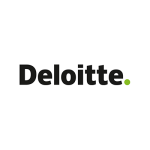First of all, why should we care?
The tax function is one of an organisation’s biggest data consumers, not only collecting core accounting data from financial systems but also other applications, including transactional, treasury, legal entity, document, and calendar management.
Despite the constant expansion and evolution of tax legislation and data needs and requirements, these processes have remained largely manual, requiring a significant amount of time and effort that could otherwise be spent on other value-added activities. Additionally, regulators and other third parties require tax teams to produce reports more quickly than in the past, sometimes on demand.
Moreover, according to Deloitte’s Tax transformation trends survey, business partnering demands in the tax department are rising, with 93% of tax leaders saying their department’s budget remains flat or is falling.
This all paints a rather grim picture for the tax function if it stays ‘as is’. Change is no longer an option but a must, and this transformation could start from the driving force of it all: data.
What is a data strategy, and why does it matter?
A data management strategy refers to the tools, processes, and rules that define how organisations manage, analyse, and act upon business data. A data strategy helps firms make informed decisions based on available data and maximise the ability to introduce internal and/or external software solutions to produce reports (e.g., tax returns). It also helps keep data safe and compliant with the applicable regulations, such as the EU’s General Data Protection Regulation 2016/679 (GDPR).
It is clear that a data management strategy for tax functions is essential. According to Deloitte’s Tax transformation trends survey, tax leaders believe that, for tax to be more proactive at delivering strategic insights to the business, simplifying data management (53%) and moving to lower-cost resourcing models (51%) must be prioritised.
Indeed, taking tax needs into account is essential during the data-gathering phase of transformations; and as it turns out, tax teams that ensure a seat at the table when enterprise resource planning (ERP) systems are overhauled receive substantial benefits. In Deloitte’s Tax transformation trends survey, 56% of respondents that introduced NextGen ERP systems are now highly effective at supporting the business with scenario-modeling insights. In comparison, only 35% of those with moderate to low use of NextGen ERP systems said the same.
Because every business collects data in multiple forms, a data strategy also enables departments to manage and interpret all this data in a consistent, efficient, and valuable manner, and the tax function is no different. Therefore, a data strategy is paramount to solve various challenges, such as:
Slow and inefficient business processes;
Data privacy, data integrity, and data quality issues that undercut the ability to leverage this data;
A lack of deep understanding and integration of critical parts of the business (customers, supply chain, competitive landscape, etc.);
A lack of clarity about current business needs and goals; and
Inefficient movement of data across different parts of the business, resulting in data duplication between multiple business units.
What is the endgame?
The tax data management strategy should aim to achieve:
Automation: Steering away from manual data processes to leverage technologies like robotic process automation (RPA), extract, transform, and load (ETL), or machine learning (ML) is essential for a robust tax data management strategy.
Use of real-time data: As the cloud and big data drive down the cost of accessing real-time data, using batch data is no longer sufficient. Moreover, some jurisdictions already require taxpayers to report data to tax authorities in real time.
One trusted source: Nowadays, consistency is key. Therefore, it is no longer viable to have point solutions with each tax process and tool using different data sources and potentially generating inconsistent reports. Instead, the data management strategy should rely on a single repository that is fed data from different sources. This allows the data to be standardised so it can be reliably used for different purposes across the tax function.
Flexible data: While fixed, predefined data avoids redundancy and enhances efficiency, it has the critical downfall of requiring lengthy cycle development processes to incorporate new data elements. In the constantly evolving world we live in, the tax function must be agile; it cannot afford data immutability.
Prediction: A data management strategy allows the tax department to anticipate the impact of new tax legislation in various jurisdictions. One example is the future implementation of the OECD’s Pillar Two, which requires organisations to look after data that is not solely from consolidated accounts. Therefore, to quantify this initiative’s impact and also mitigate future tax compliance processes and time consumption, a specific data strategy must be implemented to address this topic.
When and how to start
The success of digital transformation initiatives and the proper definition and execution of a tax data management strategy will dictate whether tax can truly redefine its role in generating more value for the business. What will eventually determine a tax function’s survival is whether it drives the change or accommodates it.
CFOs and tax managers are not alone in this herculean task. The Tax Digital Factory at Deloitte Luxembourg helps businesses define tax data management strategies based on their needs. In parallel, it has developed tax-specific digital solutions that enable tax data management implementation, such as the alternative investment fund (AIF) reporting tool, standard audit file for tax (FAIA or SAF-T), DAC6, DBoard, and many others. These solutions allow organisations’ tax functions to design and foresee, develop and deploy, and thrive and lead.
Thierry Bovier
Partner, Deloitte Luxembourg
Sergio Ruiz de Gracia
Assistant manager, Deloitte Luxembourg












